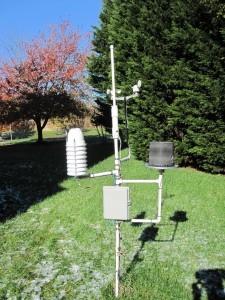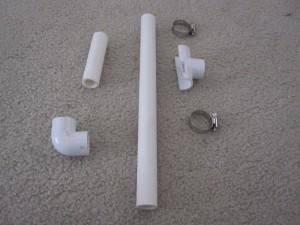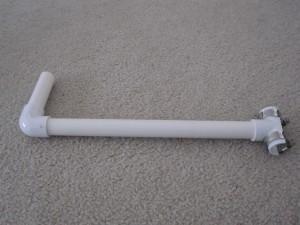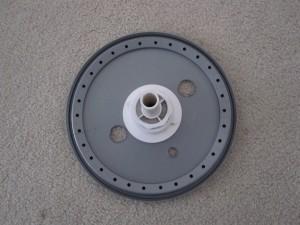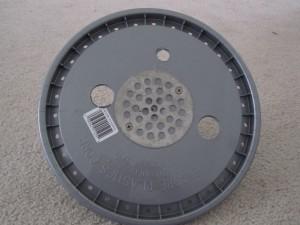There have been a lot of distractions lately, but I’ve managed to get some more work done. The weather’s been nice, and I wanted to get things finished up this weekend so I can make adjustments while it isn’t too miserable outside. Hopefully the good weather will hold out a little while longer since I didn’t get as far along as I had hoped.
I purchased some conduit clamps and stainless steel hardware for mounting the weatherproof housing on to the station mast. That worked out well, and all I needed to do was to drill some small holes in the housing. The following pictures show the clamps and how I mounted them. So now the box is mounted on the pole.
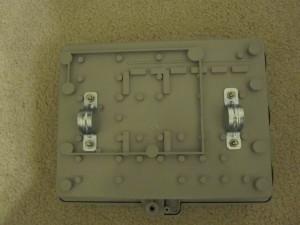
Mounting Clamps
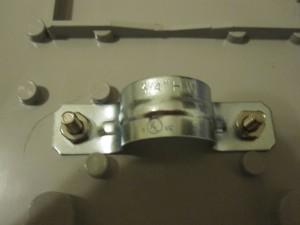
Mounting Clamp Close Up
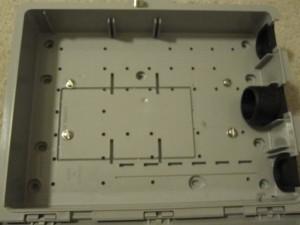
Mounting Clamp Inside
I hadn’t yet created a way to mount my solar sensor in the fan aspirated radiation shield. All I did was drill some holes for mounting screws and for the photo diode to protrude slightly out of the top of the FARS. I also applied some liquid electrical tape to the board as weatherproofing. I plan to seal around all of the holes I drilled with some caulk to make sure it doesn’t leak.
I finished up the rain gauge. I found the original wiring with an RJ-45 connector which I reinstalled, replacing the RJ-11 wiring I currently had on the gauge. Then I screwed the gauge down to the base I had created, and installed the hat that fits over the top of the gauge. So now the rain gauge is ready to be installed on the weather station mast.
I fitted the anemometer to the mount I made. I installed the mount on the station mast with the stainless steel clamps I had for it. Then I put the anemometer on the mast. I would like it to fit just a bit tighter, so I’ll probably install a screw or wrap a shim of some kind around the anemometer pole. I also applied some silicon grease to the connectors to waterproof them. I’ll have to revisit this install and devise a way to keep it from turning on the base.
I also started a couple of other pieces. I applied liquid electrical tape to the 1-Wire hub prior to installation in it’s case. As soon as the liquid dries, I plan to install it in the case and then in the waterproof housing. I also started fitting the lightning sensor to its’ housing. I wasn’t sure if it would fit, as the new lightning sensor is not the same size as the one I removed. I installed the antenna and slipped the sensor into the housing. It looks like that will fit with no problems.
I did spend a little more time with the software. There was bug in the PHP code for the historical rain data. It always showed as zero. It turned out I just needed to cast the values to float prior to doing math with them. I had the correct values, just as strings. When I tried to subtract them I always ended up with an answer of zero. Just for fun, I also changed some of the radar pictures to animated ones. I’ll most likely tweak that page some more over the winter when it’s too cold to work on the outside hardware. I also want to come up with a more attractive logo for the site. My artistic talents are sorely lacking, but I may give it a go sometime soon. Maybe even have something that changes automatically based on the weather conditions or the season. We’ll see where that one ends up.

